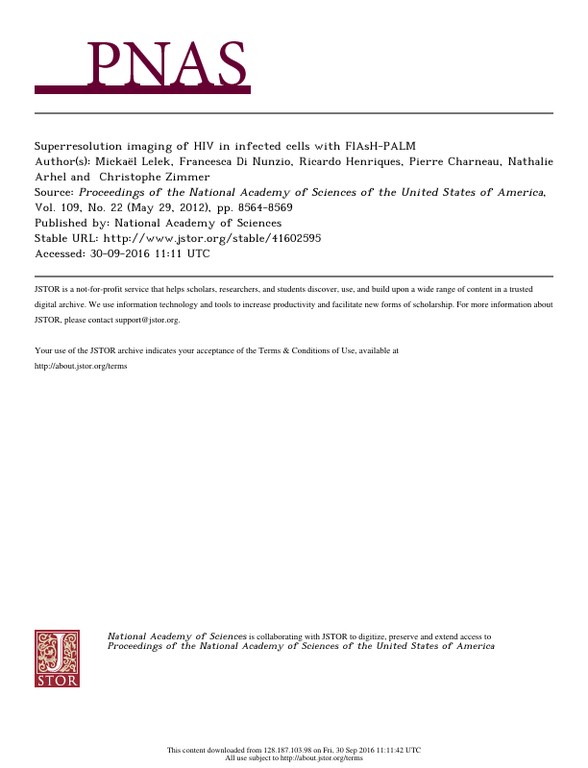Superresolution imaging of HIV in infected cells with FlAsH-PALM
Paper published in Proceedings of the National Academy of Sciences, January 2012
Publisher: National Academy of Sciences

The manuscript by Mickaël Lelek et al. published in Proceedings of the National Academy of Sciences of the United States of America in 2012 introduces the use of Fluorescence Localization after Switching (FLASHS) in combination with Photoactivated Localization Microscopy (PALM) to achieve superresolution (SR) imaging of the integrase enzyme (IN) of Human Immunodeficiency Virus (HIV) in both fixed and live infected cells. The researchers employed small tetracysteine motifs in IN that bind with high affinity and specificity to the fluorescein arsenical helix binder (FlAsH), enabling live cell imaging without disrupting the protein's function. The obtained resolution of approximately 30 nm allowed for the characterization of IN distribution within virions and intracellular complexes, distinguishing different HIV structural populations based on morphology, and observing that cytoplasmic IN complexes displayed a morphology similar to the conical capsid. This technique paves the way for in vivo SR studies of microbial complexes within host cells and may contribute to achieving truly molecular resolution. The study also discusses potential enhancements and future directions for FlAsH-PALM, including 3D imaging and the utilization of ReAsH for light and electron microscopy visualization of the same specimen.